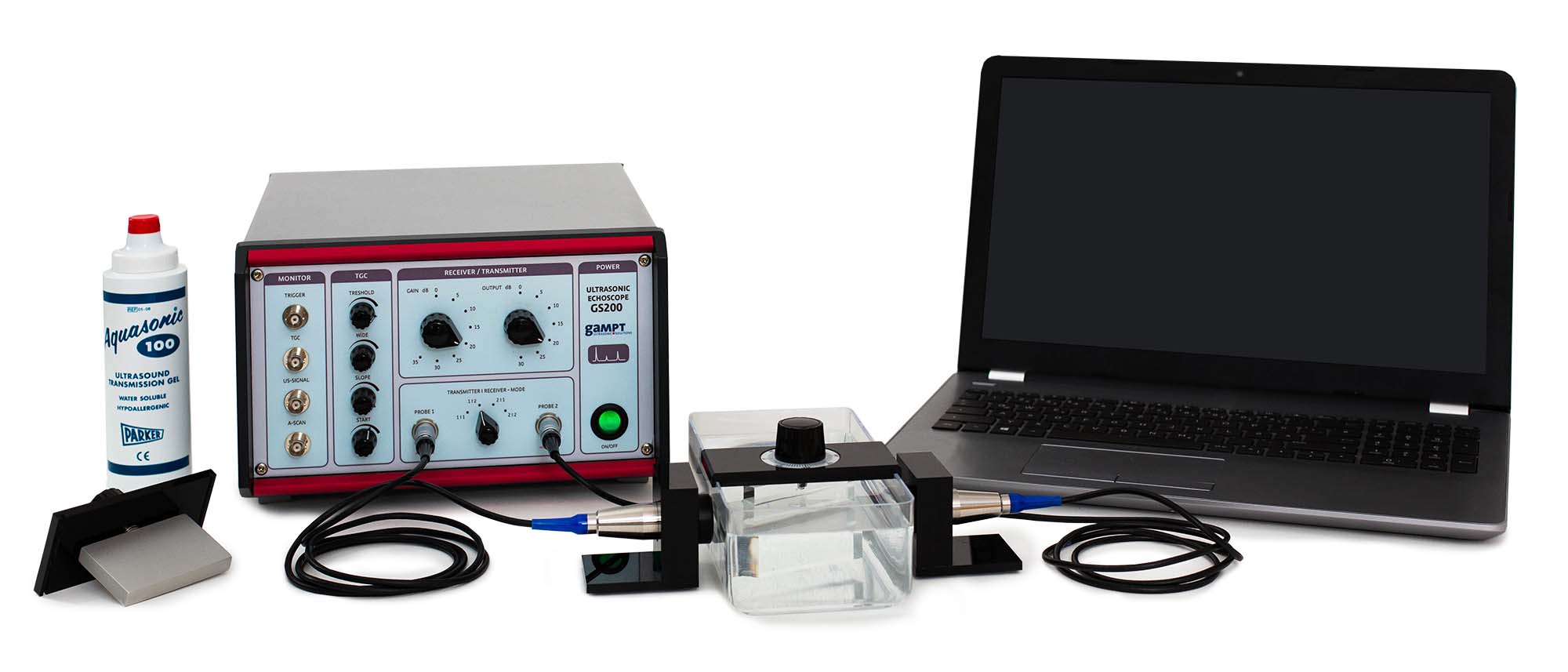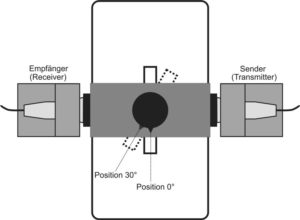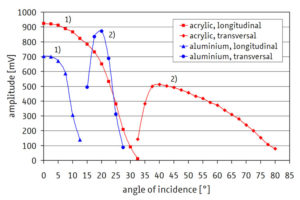Article No. VK-PHY07
PHY07 Shear waves in solids
Investigation of the formation and propagation of longitudinal and shear acoustic waves in solids based upon the ultrasonic transmission through a plane parallel plate at different angles of incidence
- Subject matter of the experiment
- Theoretische und praktische Aspekte zum Versuch
- Results
- Equipment
- Related Experiments
Based upon the ultrasonic transmission through a plane parallel plate at different angles of incidence, the formation and propagation of longitudinal and shear acoustic waves in solids is investigated. From the determined longitudinal and transversal sound velocities, the elastic material factors such as the modulus of elasticity and shear and Poisson’s ratio are derived for the plate materials used.
Keywords: Ultrasonic propagation in solids, transmission, reflection, longitudinal and shear waves and sound velocities, modulus of elasticity, modulus of shear, Poisson’s ratio
Unlike in gases and liquids, in solids both shear and longitudinal waves can be excited due to their elastic material properties. During passage through a plane parallel plate longitudinal and/or shear waves are excited depending on the incidence angle. The angles of total reflection for the longitudinal and shear wave and the angle at which the shear wave shows its maximum here correspond with the respective sound velocity. By recording the amplitudes of the longitudinal and transversal transmission signals over a corresponding range of the angle of incidence, these angles can be ascertained and the respective sound velocities determined. From the sound velocities, the elastic material factors of the plate materials used can be calculated, such as the modulus of elasticity and shear and the Poisson’s ratio.
The graphic shows the amplitude-angle curves for the determining of the angles for total reflection (longitudinal and transversal) and the maximum amplitude (transversal). Independent of the material, but for different angles, the amplitude-angle dependence of the transmission can always be described by three categories: longitudinal signal only (1), a mixed mode of longitudinal and transversal signal and transversal signal only (2).
| Ord.no. | Description |
|---|---|
| 10400 | Ultrasonic echoscope GS200 |
| 10151 | 2 ultrasonic probes 1 MHz |
| 10218 | Shear wave set |
| 70200 | Ultrasonic gel |


